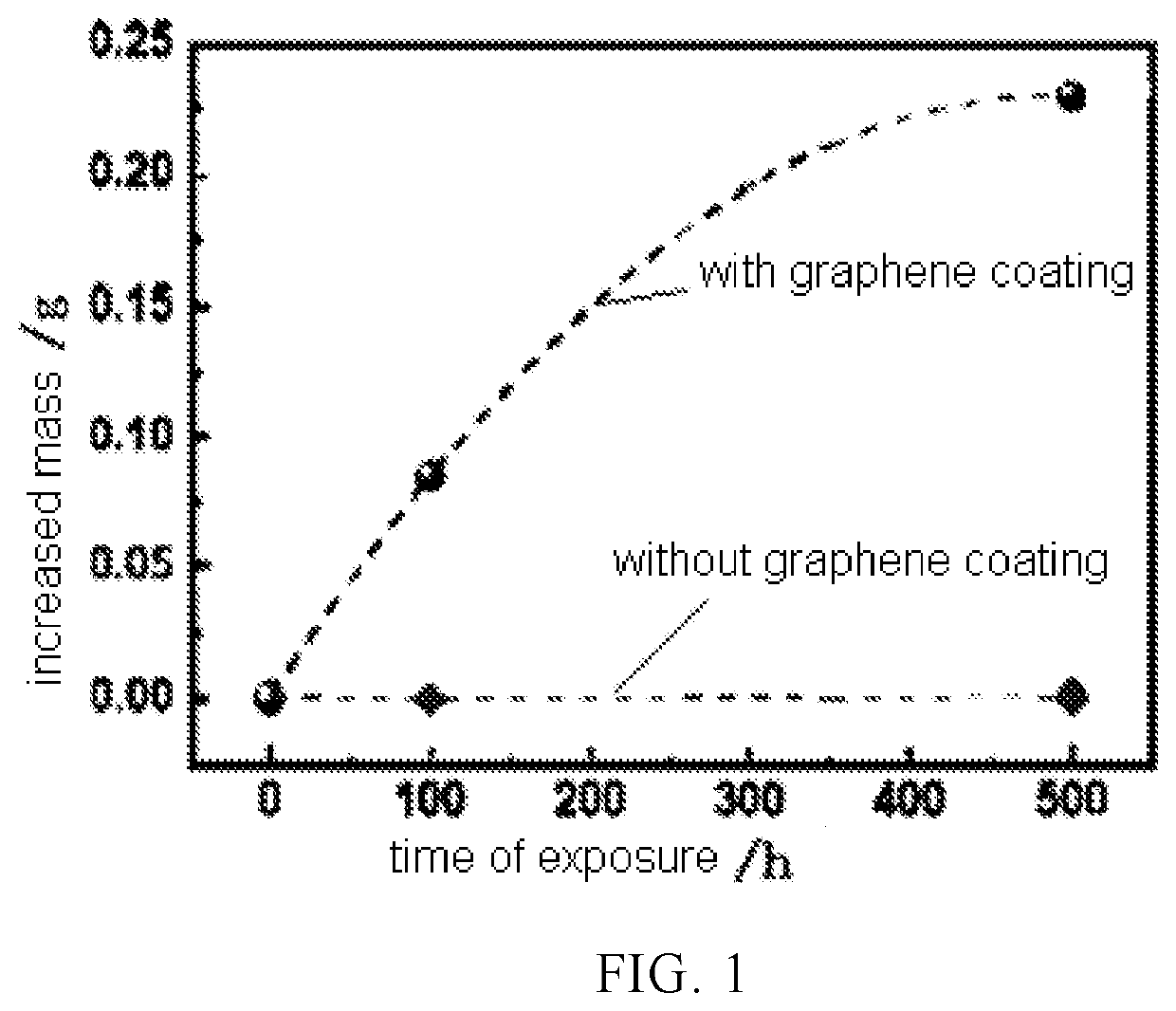Method of preparing graphene coating on metal surface
a graphene coating and metal surface technology, applied in the field of reactor engineering, can solve the problems of affecting equipment performance, restricting equipment economy and safety, and affecting equipment efficiency, so as to avoid the disadvantages of high temperature, improve the resistance to high temperature oxidation (corrosion), and avoid hydrogen embrittlement
- Summary
- Abstract
- Description
- Claims
- Application Information
AI Technical Summary
Benefits of technology
Problems solved by technology
Method used
Image
Examples
example 1
[0050]A method of coating a metal surface with a graphene coating is provided. The method includes the following steps:
[0051]Step 1: metal surface pretreatment
[0052]Immersing and ultrasonically cleaning inner and outer surfaces of the metal surface with a solvent, so as to remove surface impurities and oil stains. The solvent may be one or more of acetone, ethanol, deionized water, ultrapure water, or alkaline solution. The solvent can be used to remove impurities and oil stains on the inner and outer surfaces of the metal, so that graphene oxide can be better adsorbed on the inner and outer surfaces of the metal sample.
[0053]Step 2: choosing a graphene oxide aqueous solution with 1˜10 layers and a mass fraction of 1.5 wt % to immerse the metal sample obtained in step 1 for 20 minutes, so that the graphene oxide aqueous solution completely covers the inner and outer surfaces of the metal sample.
[0054]Step 3: baking and drying the graphene-oxide-coated metal sample obtained in step 2...
example 2
[0058]The difference from Example 1 is that the solvent in step 1 is an ethanol solution and a potassium hydroxide solution, and the cleaning sequence is first immersing in the ethanol solution for 60 minutes and performing ultrasonic cleaning, and then immersing in the potassium hydroxide solution and performing ultrasonic cleaning, so as to remove surface oil stains and impurities. The step 1 removes the surface oil stains and impurities very thoroughly, ensuring that the graphene coating is successfully coated and the thickness unevenness of the coating is less than 5%. The concentration of the potassium hydroxide solution is 0.1 mol / L. In the step 2, a graphene oxide aqueous solution with 20˜50 layers and a mass fraction of 10 wt % is chosen to spray the metal sample. In step 3, the drying temperature is 40° C., the drying time is 72 hours, and the drying environment is a low-pressure protection environment of 0.05 Pa. In step 4, the reducing agent is hydrazine, the microwave po...
example 3
[0059]The difference from Example 1 is that the solvent in step 1 is an ethanol solution and a potassium hydroxide solution, and the cleaning sequence is first immersing in the ethanol solution for 40 minutes and performing ultrasonic cleaning, and then immersing in the potassium hydroxide solution and performing ultrasonic cleaning, so as to remove surface oil stains and impurities. The concentration of the sodium hydroxide solution is 0.8 mol / L. In step 2, a graphene oxide aqueous solution with 50˜100 layers and a mass fraction of 0.1 wt % is chosen to coat the metal sample in a hanging brush manner. In step 3, the drying temperature is 150° C., the drying time is 30 hours, and the drying environment is air. In step 4, the reducing agent is sodium hydrogen borate, the reducing agent is ascorbic acid, hydrazine, sodium hydrogen borate or hydroiodic acid, the microwave power range is 1000 W, the reduction temperature is 190° C., and the reduction time is 10 minutes. In step 5, the c...
PUM
| Property | Measurement | Unit |
|---|---|---|
| Temperature | aaaaa | aaaaa |
| Temperature | aaaaa | aaaaa |
| Temperature | aaaaa | aaaaa |
Abstract
Description
Claims
Application Information
 Login to View More
Login to View More - R&D
- Intellectual Property
- Life Sciences
- Materials
- Tech Scout
- Unparalleled Data Quality
- Higher Quality Content
- 60% Fewer Hallucinations
Browse by: Latest US Patents, China's latest patents, Technical Efficacy Thesaurus, Application Domain, Technology Topic, Popular Technical Reports.
© 2025 PatSnap. All rights reserved.Legal|Privacy policy|Modern Slavery Act Transparency Statement|Sitemap|About US| Contact US: help@patsnap.com

